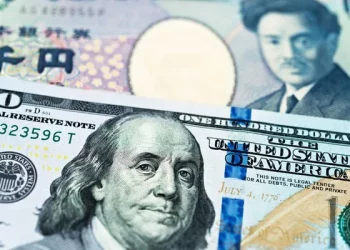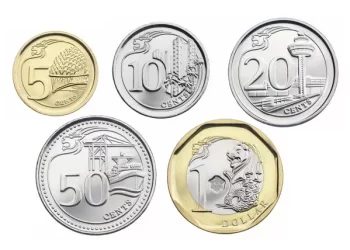美元 (USD) 和英镑 (GBP) 之间的汇率代表了世界上交易最活跃的货币对之一。由于这两个经济体均位居全球前五,美元/英镑汇率的波动会影响国际贸易、投资组合和央行政策。截至 2024 年,该货币对约占外汇市场每日成交量的 12%,凸显了其系统重要性。美元/英镑汇率的核心反映了两种主要储备货币的相对价值。美元作为世界主要储备货币的地位源于美国占主导地位的经济规模(2023 年 GDP 为 26 万亿美元),而英镑作为原始的全球储备货币具有历史意义。它们的关系受到货币政策分歧和地缘政治事件等因素的影响,使其成为更广泛市场情绪的风向标。
基础知识:货币对机制
了解 Quote 结构
美元/英镑报价遵循直接定价惯例,其中一单位基础货币 (USD) 以报价货币 (GBP) 表示。例如,汇率 0.78 表示 1 美元可以购买 0.78 英镑。这种结构与用于 GBP/USD 的间接报价形成鲜明对比,后者以美元表示 1 英镑。
市场惯例和流动性
全球外汇中心每天 24 小时进行交易。伦敦占美元/英镑交易量的 43%,其次是纽约 (19%)。高流动性确保低点差,零售交易者的点差通常在 0.8 到 1.2 点之间。主要的银行间参与者包括汇丰银行、摩根大通和巴克莱银行。
美元/英镑波动的宏观经济驱动因素
利率差异
中央银行政策起着关键作用。美联储的联邦基金利率和英格兰银行的银行利率会产生收益率差异。当美联储加息的速度快于英国央行时,如 2022-2023 年的紧缩周期所示,美元兑英镑通常会升值。历史数据显示,0.5% 的差价可以在六个月内使汇率波动 3-5%。
GDP 增长和贸易差额
比较经济增长很重要。2024 年第二季度,美国 GDP 同比增长 2.3%,而英国为 1.8%,提振了美元需求。贸易数据也影响了该货币对——相对于美国在某些行业的顺差,英国持续的贸易逆差(2023 年占 GDP 的 2.8%)对英镑造成了结构性抛售压力。
地缘政治和监管影响
英国脱欧的后果
英国脱欧带来了持续的不确定性。英国脱欧后的贸易壁垒使 2021 年英国与欧盟的商品贸易减少了 15%,从而削弱了英镑。监管分歧,例如英国金融服务业失去“通行权”,继续对货币造成压力。
美国财政政策的转变
《通货膨胀削减法案》(2022 年)等美国主要立法会影响资本流动。其 3690 亿美元的绿色能源激励措施吸引了全球投资,使美元走强。相比之下,英国在 COVID-19 后的财政刺激计划将公共债务增加到 GDP 的 103%,削弱了英镑的信心。
技术分析:预测工具
图表模式
头肩或双顶/双底等关键形态具有预测价值。例如,2023 年美元/英镑的看跌头肩形态在贬值 4.2% 之前。移动平均线(例如 50 天和 200 天)有助于识别趋势和支撑/阻力位。
波动率指标
芝加哥期权交易所 (CBOE) 美元/英镑波动率指数 (USDGBPVIX) 衡量隐含波动率。在 2022 年迷你预算危机期间,它从 14 飙升至 28,表明不确定性增加。布林带通过显示移动平均线周围的价格包络线来量化波动性。
美元/英镑交易的风险管理
对冲策略
公司使用远期合约来锁定汇率。在 90 天内向美国销售商品的英国出口商可以签订远期合同,以预先商定的汇率出售美元,从而消除货币风险。期权合约提供了更大的灵活性,允许对冲者限制下行空间,同时保留上行潜力。
杠杆和保证金注意事项
散户交易者经常使用杠杆,但它会放大风险。在 50:1 的杠杆率下,2% 的不利举动可以抹去 100% 的保证金。止损单等风险管理工具是必不可少的——在入场前 50 点设置止损可以限制波动时期的损失。
Long-Term Outlook and Historical Perspectives
Decadal Trends
Over the past decade (2014-2024), USD/GBP ranged from 0.68 to 0.92. The 2016 Brexit referendum triggered a 12% depreciation in GBP, while the 2020 COVID crisis initially strengthened USD as a safe haven. Structural factors like UK productivity stagnation (1.2% annual growth since 2010) pose long-term headwinds for GBP.
Future Projections
Analysts at Goldman Sachs predict USD/GBP could reach 0.85 by 2025, citing continued Fed hawkishness and UK labor market tightness. However, risks remain—an economic slowdown in the US or a successful UK growth plan could reverse this trend.
Impact on Global Investment Portfolios
USD/GBP movements ripple through diversified portfolios. Hedge funds adjust allocations based on rate differentials, while pension funds hedge exposure to UK or US assets. For example, a US-based investor holding UK equities may experience 10% additional gains or losses solely from currency fluctuations over a year.
Retail vs. Institutional Trading Approaches
Retail traders often rely on technical analysis and leverage, while institutions focus on fundamental drivers. Case studies show that banks hedge large positions using swaps, contrasting with retail traders’ spot market focus. Regulatory differences, like FCA rules in the UK versus CFTC in the US, also shape trading behaviors.
The Role of Speculators in USD/GBP Movements
Speculators wield significant influence on short-term exchange rate dynamics. Hedge funds often deploy carry trade strategies, borrowing low-yielding GBP to invest in higher-yielding USD assets. For example, during periods when the Fed maintains a 2% interest rate advantage over the BoE, carry trades can drive GBP depreciation as speculators flood the market with sell orders. Retail traders, leveraging platforms like MetaTrader, also contribute to volatility through algorithmic trading bots. These automated systems execute trades based on pre-set technical indicators, amplifying price movements during key economic announcements.
Technological Innovations Reshaping USD/GBP Trading
Blockchain and artificial intelligence are revolutionizing currency trading. Decentralized finance (DeFi) platforms now offer peer-to-peer USD/GBP swaps, bypassing traditional banks. For instance, protocols on the Ethereum network enable smart contract-based trades with reduced counterparty risk. Meanwhile, AI-driven trading algorithms analyze vast datasets—including social media sentiment about economic policies and satellite imagery of port activity—to predict rate changes. These innovations not only increase trading speed but also democratize access, allowing smaller investors to compete with institutional players.
Conclusion
The USD/GBP exchange rate serves as a barometer for transatlantic economic health. While macroeconomic fundamentals provide the primary directional cues, geopolitical events and technical factors add short-term volatility. For market participants—whether multinational corporations hedging currency risk or retail traders seeking profit opportunities—understanding these dynamics is crucial. As both economies evolve, the USD/GBP pair will continue to reflect shifts in global economic power, making it a perpetual focus of financial analysis.
Related topics























